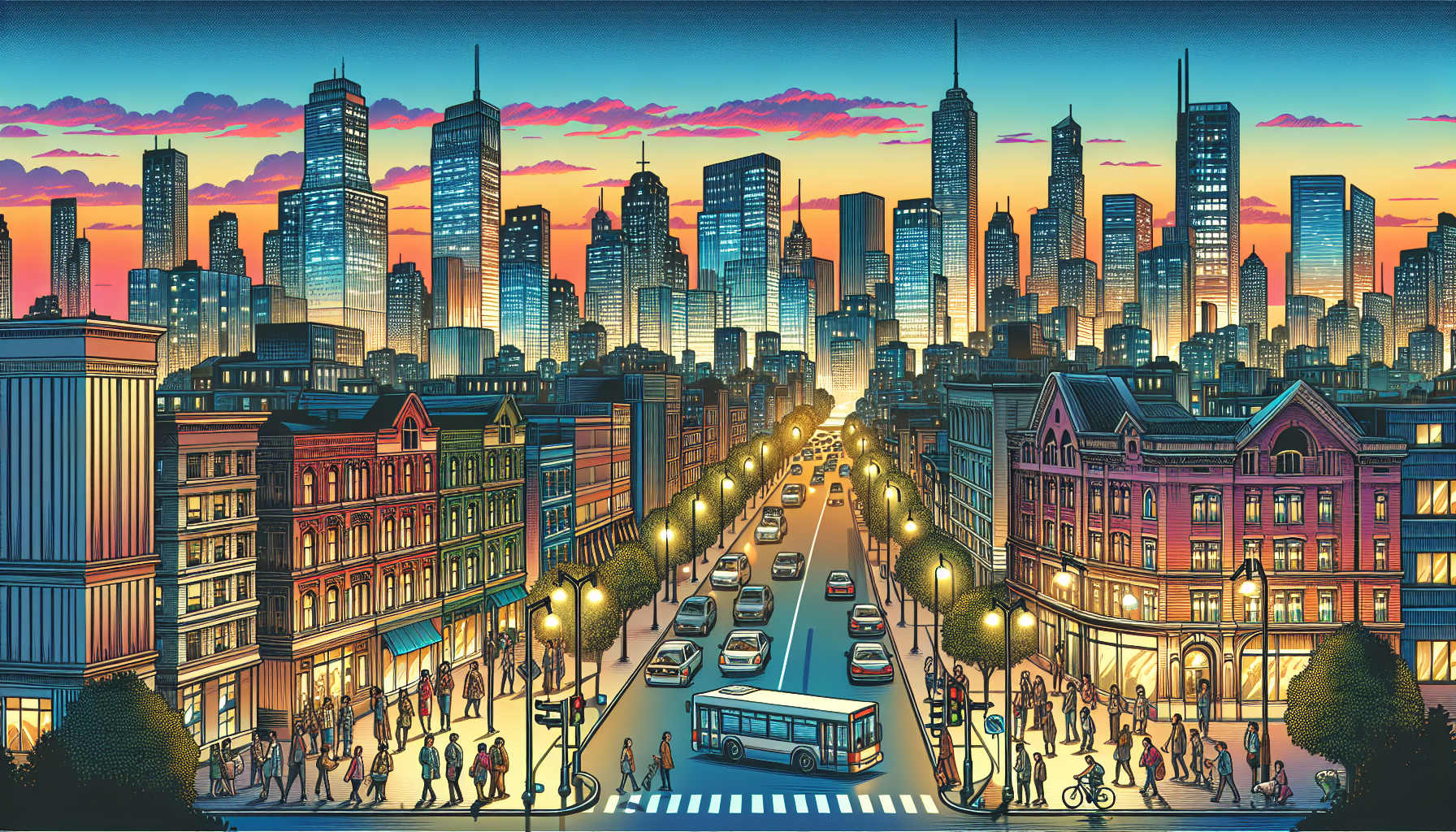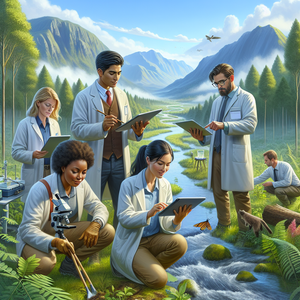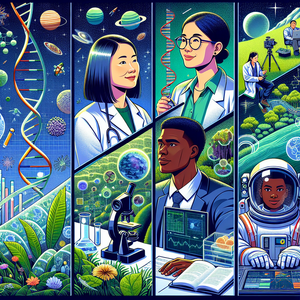The Intersection of Art and Science: Creative Careers to Consider

One of the most striking examples of the intersection between art and science can be found in the field of medical illustration. Medical illustrators are trained artists who possess a deep understanding of anatomy and medical procedures. They create detailed illustrations, animations, and three-dimensional models that aid in educating medical professionals and patients alike. For instance, at medical conferences, accurate and visually engaging illustrations can facilitate the understanding of complex surgical techniques, making them more accessible to practitioners and the public. A notable example is the work of medical illustrators who collaborate with surgeons to create visual aids that explain intricate procedures; these visuals not only enhance comprehension but also serve as valuable tools for teaching. This role requires not only artistic skill but also a solid foundation in biological sciences, illustrating how art can effectively translate intricate scientific concepts into comprehensible visuals.
Scientific Photography: Capturing the Invisible
Scientific photography represents another fascinating career path where artistry meets scientific inquiry. Photographers in this domain utilize their skills to document scientific processes, phenomena, and research outcomes. This field extends beyond traditional photography; it often employs specialized techniques such as macro photography, which captures minute details, or time-lapse photography, which reveals changes in an organism or environment over time. For example, photographers working in ecology may document the effects of climate change on ecosystems, providing striking images that evoke emotional responses and raise awareness about environmental issues. A well-known image of coral bleaching, captured through scientific photography, can stir public consciousness and compel action toward conservation. By blending artistry with scientific inquiry, these photographers play a crucial role in communicating complex data and narratives to a broader audience, ultimately influencing public perception and policy decisions.
Environmental Design: Merging Aesthetics with Sustainability
Environmental design serves as another exemplary career pathway that illustrates the fusion of art and science. Professionals in this field focus on creating spaces that are not only aesthetically pleasing but also environmentally sustainable. This can encompass landscape architecture, urban planning, and product design. For instance, a landscape architect might design a public park that incorporates native plant species to promote biodiversity while also providing a beautiful space for community interaction. Such designs not only enhance the visual appeal of an area but also contribute to ecological health by supporting local wildlife and reducing maintenance needs. By integrating ecological principles with artistic design, environmental designers contribute to creating functional and sustainable environments that enhance quality of life and promote ecological stewardship.
The Impact of Science Communication
Science communication is a vital area that merges creativity with scientific education. Science communicators craft compelling narratives around complex scientific topics, making them more relatable and understandable to the general public. This can take various forms, including writing articles, producing documentaries, or creating engaging social media content. Organizations like NASA exemplify effective science communication by using creative storytelling techniques in their outreach efforts to inspire interest in space exploration and science. For example, their use of visually stunning infographics and interactive content helps demystify complex concepts, such as black holes and space travel. By translating scientific jargon into engaging narratives, science communicators bridge the gap between researchers and the public, fostering a greater appreciation for science and its broader implications.
The intersection of art and science is a vibrant realm that presents numerous career opportunities for those willing to explore beyond conventional paths. From medical illustration to scientific photography, environmental design, and science communication, professionals in these fields play a pivotal role in enhancing our understanding of science while simultaneously enriching our cultural landscape. As society continues to grapple with complex challenges, the collaboration of artistic creativity and scientific inquiry will become increasingly vital in driving innovation and fostering a deeper connection to the world around us. Embracing these creative careers not only enhances scientific discourse but also opens up new avenues for personal expression and societal impact. In a rapidly evolving world, the synergy of art and science will remain essential for addressing the multifaceted issues we face today.
Medical Illustrator
Medical schools, hospitals, and scientific publishing companies.
Core Responsibilities
Create accurate and detailed visual representations of anatomical structures, surgical procedures, and medical concepts for educational purposes.
Collaborate with healthcare professionals to produce illustrations for textbooks, journals, and patient education materials.
Required Skills
Strong artistic skills combined with a robust understanding of human anatomy and medical terminology.
Proficiency in digital illustration software (e.g., Adobe Illustrator, Photoshop).
Scientific Photographer
Research institutions, universities, and environmental organizations.
Core Responsibilities
Capture high-quality images that document scientific phenomena, experiments, and research findings across various disciplines.
Utilize specialized techniques such as macro and time-lapse photography to reveal intricate details or dynamic processes.
Required Skills
Expertise in photography and a keen eye for detail, along with knowledge of scientific principles relevant to the specific field (e.g., biology, ecology).
Familiarity with editing software to enhance and prepare images for publication.
Landscape Architect
Landscape architecture firms, urban planning departments, and governmental agencies.
Core Responsibilities
Design outdoor spaces that are both aesthetically appealing and environmentally sustainable, focusing on the integration of native plants and local ecosystems.
Conduct site assessments and collaborate with clients and stakeholders to develop comprehensive design proposals.
Required Skills
Strong design skills with an understanding of horticulture, ecology, and landscape management principles.
Proficiency in design software (e.g., AutoCAD, SketchUp) and excellent communication skills for client interactions.
Science Communicator
Research institutions, non-profit organizations, and media companies.
Core Responsibilities
Develop engaging content that simplifies complex scientific concepts for the general public through various mediums, including articles, videos, and social media.
Collaborate with scientists to translate research findings into accessible narratives that promote public understanding and interest in science.
Required Skills
Excellent writing and storytelling abilities, combined with a solid grasp of scientific principles.
Experience in multimedia production and familiarity with digital communication tools.
Environmental Designer
Architectural firms, government agencies, and non-profit organizations focused on sustainability.
Core Responsibilities
Create innovative designs for spaces that prioritize sustainability, incorporating elements such as natural materials and energy-efficient solutions.
Conduct environmental impact assessments to ensure designs align with ecological goals and community needs.
Required Skills
A strong background in design principles, sustainability practices, and environmental science.
Proficiency in design software (e.g., Rhino, Grasshopper) and experience in project management.


